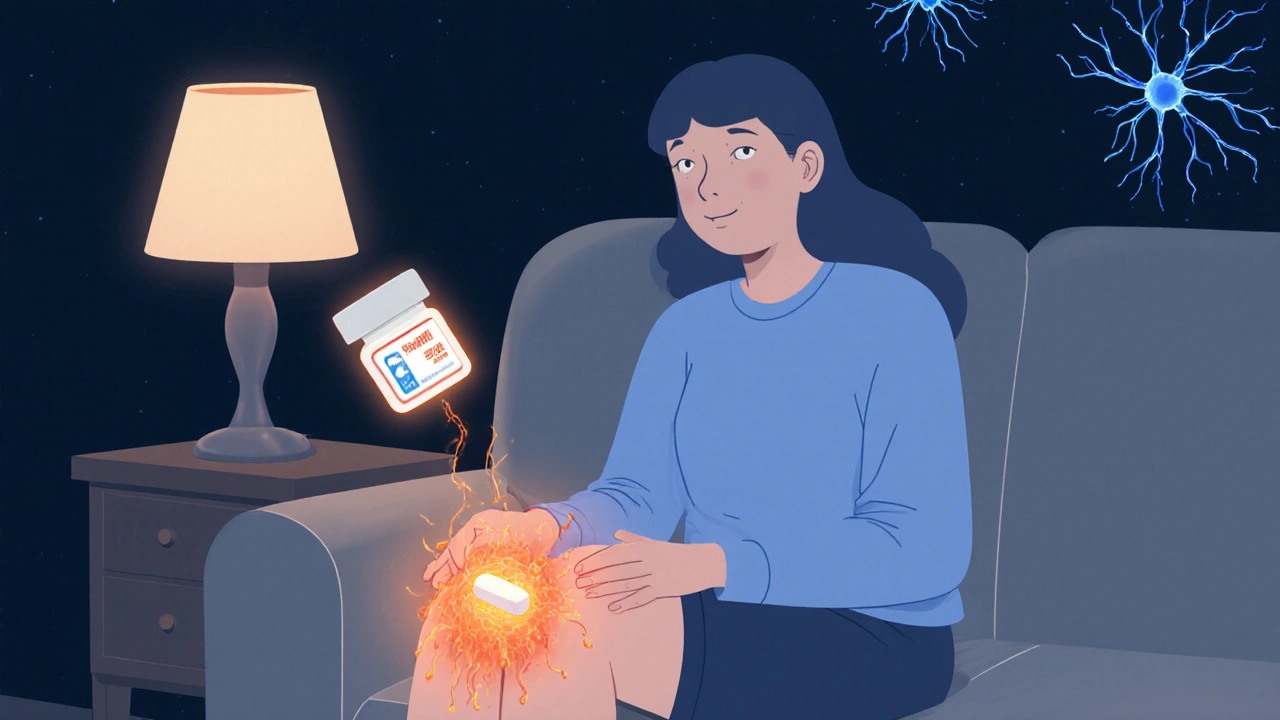Neuropathic Pain: What It Is and How to Tackle It
Ever felt a burning, tingling or stabbing sensation that just won’t go away? That’s often neuropathic pain – a type of pain that comes from damaged nerves instead of an injury to skin or muscles. It can show up in the feet, hands, or anywhere nerves travel, and it tends to stick around longer than regular aches.
Most people get neuropathic pain from diabetes, shingles, or a pinched nerve, but chemotherapy, multiple sclerosis, and even a fall can trigger it too. The key is that the pain signal comes from the nervous system itself, so typical painkillers like ibuprofen often don’t help much.
Spotting the Signs
If you’re wondering whether you’re dealing with nerve pain, look for these clues: a constant electric‑like zap, burning that feels like it’s on fire, or a numbness that flips to sharp pain with the slightest touch. These symptoms usually worsen at night, making sleep a challenge.
Because the pain can be unpredictable, keeping a short diary of when it spikes and what you were doing can help you and your doctor find patterns and better treatment options.
Practical Ways to Relieve Neuropathic Pain
First off, talk to a healthcare professional about prescription options. Medications such as low‑dose gabapentin, pregabalin, or certain antidepressants are often the first line because they calm the nerve signals. If you’re curious about gabapentin, many doctors start with a low dose and increase it gradually to avoid drowsiness.
Topical creams containing lidocaine or capsaicin can also dull the pain locally without affecting the whole body. Applying them right after a shower helps the skin absorb the active ingredient better.
Beyond meds, lifestyle tweaks make a real difference. Regular low‑impact exercise, like walking or swimming, improves blood flow to nerves and reduces inflammation. A balanced diet rich in B‑vitamins, omega‑3 fatty acids, and antioxidants supports nerve health.
Mind‑body techniques are worth trying, too. Simple breathing exercises, mindfulness meditation, or gentle yoga can lower stress, which often amplifies nerve pain. Even a 10‑minute daily practice can ease the intensity over time.
If you’re dealing with diabetes, tight blood‑sugar control is crucial – high glucose levels can worsen nerve damage. For shingles‑related pain, antiviral treatment early on can cut down the risk of long‑term nerve issues.
Finally, keep an eye on any side effects from medication and report them promptly. Adjustments in dosage or switching to another drug can keep you comfortable without compromising safety.
Neuropathic pain is tough, but with the right mix of medication, physical activity, and self‑care, you can tame those unwanted signals and get back to the things you love.
-

Best Neurontin Alternatives: Top Prescription Options for Neuropathic Pain Relief
A deep dive into the top five prescription alternatives to Neurontin for neuropathic pain, including detailed dosing advice and the latest medical insights.
-

Gabapentin for Multiple Sclerosis: What You Need to Know
Gabapentin helps manage nerve pain in multiple sclerosis, offering relief for burning, tingling, and spasms. Learn how it works, how it compares to other treatments, side effects, and real-life results.